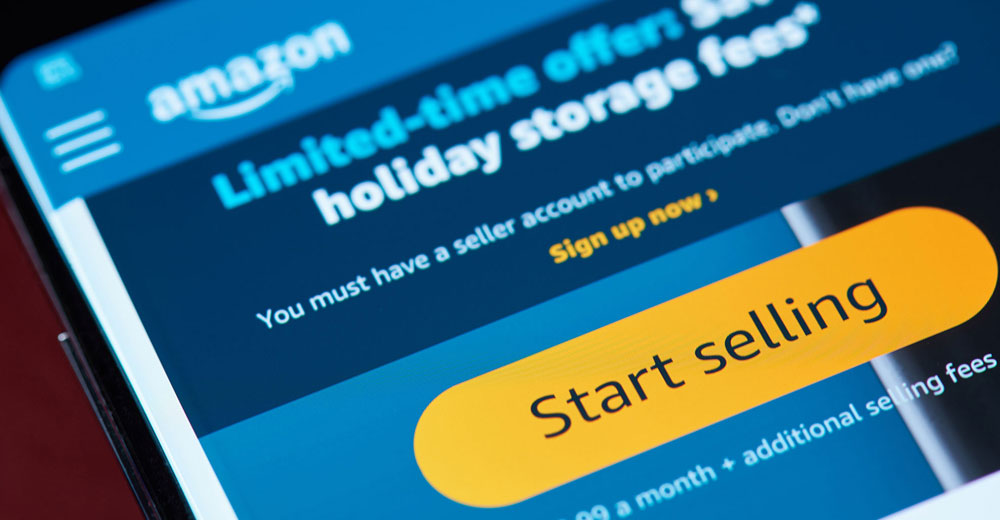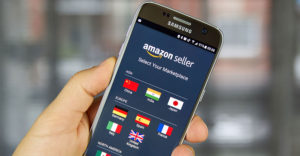Since the onset of the COVID-19 pandemic, consumer buying behaviors have changed dramatically and e-commerce is booming. The 2020 holiday season alone saw online sales increase by a whopping 49 percent over the previous year. Meanwhile, eMarketer predicted last June that traditional brick-and-mortar retail sales in 2020 would drop by more than 10 percent.
At the heart of this surge in e-commerce is Amazon.
Today, more than 60 percent of consumers start their online shopping searches on Amazon. That trend is unlikely to change, as consumers have grown accustomed to the new normal of digital purchasing. Even seniors have changed their habits and are projected to be a major driver of e-commerce growth in the coming years.
The results that matter for brands speak for themselves — Amazon’s revenue from its marketplace sellers increased by more than 50 percent in 2020 compared to the previous year.
As we look ahead into 2021 and beyond, here is what will take place in the Amazon e-commerce ecosystem that brands need to know.
Winning brands will embrace Amazon as one of their top two channels
Clearly, Amazon stands out as a huge market opportunity, yet brands have traditionally treated e-commerce as an afterthought — a secondary channel behind brick-and-mortar and their own Web presence, along with partners and resellers.
Some retailers fear they’ll lose control over the brand experience or the direct customer relationships that are so important to them. They also worry about losing traffic to their own websites and existing e-commerce channels. But with the bulk of e-commerce sales now going through Amazon, brands that want to stay relevant simply can’t ignore it any longer.
In 2021, the most successful brands will not only acknowledge Amazon as a top channel, but they will fully embrace it as an extension of their own website. With Amazon capturing the vast majority of the e-commerce traffic, other platforms will need to demonstrate a clear value to brands to remain in their channel lineup.
Getting the basics right will be critical
To win online, brands will develop wholly new strategies and execution plans that start with finding answers to the basic stuff, such as who will oversee their Amazon presence? How will they optimize their operations to deal with a whole new way of doing business? Will there be any ramifications to existing relationships with brick-and-mortar partners? How will they protect their brand and take control of the Amazon experience?
Logistics and supply chains will be a focus for both brands and Amazon
Selling on Amazon, particularly at scale, takes time, know-how, and resources. The importance of getting it right has come into acute focus with the pandemic. To keep pace with the demand generated by their Amazon storefront, brands need to make investments to ensure that their supply chain can keep up. This includes better forecasting, demand planning, inventory tracking, managing returns and customer service.
Expect Amazon to reclaim its logistics dominance. After being forced to back off its one-day and same- day delivery, Amazon will come roaring back on speed. Look for to Amazon quickly achieve one day delivery for all Prime products and expand its capabilities on same-day and even one-hour deliveries in 2021. This, again, speaks to the need for every brand to be ready.
Harnessing the power of data
Marketers in 2021 will have a new focus: getting found on Amazon.
With 9.7 million Amazon sellers worldwide, marketers will find creative ways to stand out, build brand awareness, and convert customers. Luckily, they can tap into the wealth of consumer data Amazon provides to sellers.
Amazon is the third-largest digital marketing channel behind Google and Facebook and can provide brands with valuable insights into buying personas and behaviors. While this data can help marketers develop targeted marketing campaigns and content that builds brand awareness and win market share, they should also be thinking about how to harness this data to improve the customer experience and make each interaction as seamless as possible.
Brand protection will take center stage
In addition to getting found on Amazon, brands will need to ensure their customers are finding the real deal. Counterfeiting is a big consideration for Amazon sellers. Amazon’s lack of expediency in dealing with knock-off products has led several companies to pull out of Amazon.
Although Amazon is stepping up its housekeeping efforts to remove counterfeit and unauthorized sellers, it still falls on companies to monitor and remove violators.
Brands will find new strategic partners
In the brick-and-mortar world, brands usually team with retailers or resellers to help them achieve their goals and protect and support their business. But in an omnichannel world, they need new strategic partners to help them win.
One approach seen often — and it’s not an ideal one — is for companies to partner with a traditional distributor to help them foray into Amazon. These distributors buy a brand’s products at wholesale price then resell them on Amazon at a higher price. Another form of middlemen are so-called “Amazon account managers.” Often located overseas, these independent, third-party “handlers” may be cheap, but brands get what they pay for.
In addition to these “partners” undercutting revenues, use of them makes it more difficult to protect brand integrity and gain control over unauthorized sellers. Brands will seek partners that help them get the basics right in a way that is more effective and efficient than they can do on their own.
Consumers will not look back
If it isn’t already evident, retail will never look as it did before 2020. The massive move to e-commerce forced by the pandemic accelerated this trend by a decade. E-commerce penetration went from 16 percent of U.S. retail to more than 30 percent in Q1-2021.
As more consumers move towards a digital retail experience for the vast majority of their purchases, companies simply can’t afford to reject Amazon as a channel.
The brands that can take advantage of an upswing in digital retail and popular channels like Amazon in 2021 will be the ones who are well positioned to meet consumers where they are, today and tomorrow. The ones that don’t may not be around for 2022 and beyond.

















































Social Media
See all Social Media